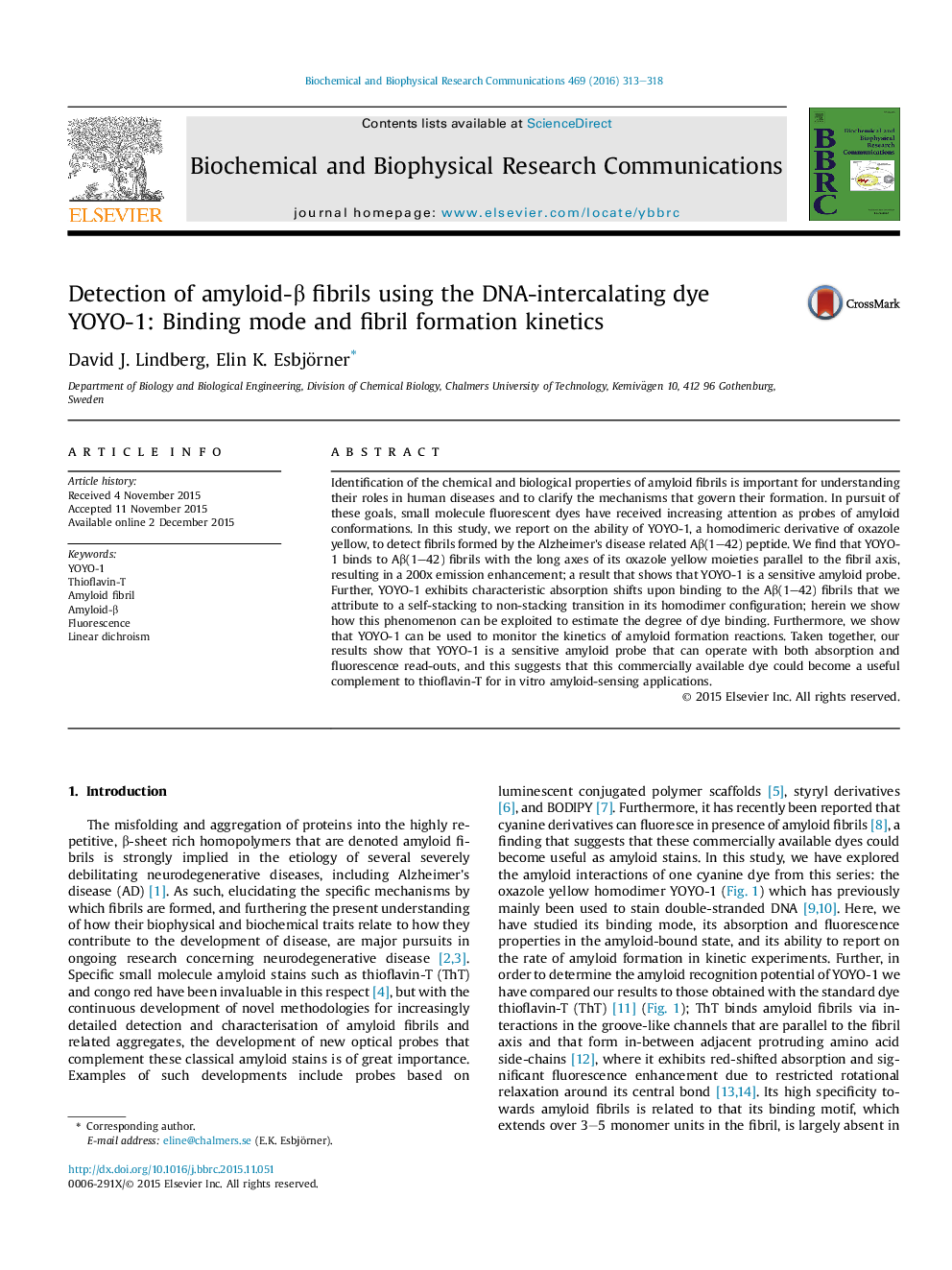| Article ID | Journal | Published Year | Pages | File Type |
|---|---|---|---|---|
| 10750395 | Biochemical and Biophysical Research Communications | 2016 | 6 Pages |
Abstract
Identification of the chemical and biological properties of amyloid fibrils is important for understanding their roles in human diseases and to clarify the mechanisms that govern their formation. In pursuit of these goals, small molecule fluorescent dyes have received increasing attention as probes of amyloid conformations. In this study, we report on the ability of YOYO-1, a homodimeric derivative of oxazole yellow, to detect fibrils formed by the Alzheimer's disease related Aβ(1-42) peptide. We find that YOYO-1 binds to Aβ(1-42) fibrils with the long axes of its oxazole yellow moieties parallel to the fibril axis, resulting in a 200x emission enhancement; a result that shows that YOYO-1 is a sensitive amyloid probe. Further, YOYO-1 exhibits characteristic absorption shifts upon binding to the Aβ(1-42) fibrils that we attribute to a self-stacking to non-stacking transition in its homodimer configuration; herein we show how this phenomenon can be exploited to estimate the degree of dye binding. Furthermore, we show that YOYO-1 can be used to monitor the kinetics of amyloid formation reactions. Taken together, our results show that YOYO-1 is a sensitive amyloid probe that can operate with both absorption and fluorescence read-outs, and this suggests that this commercially available dye could become a useful complement to thioflavin-T for in vitro amyloid-sensing applications.
Related Topics
Life Sciences
Biochemistry, Genetics and Molecular Biology
Biochemistry
Authors
David J. Lindberg, Elin K. Esbjörner,
